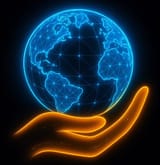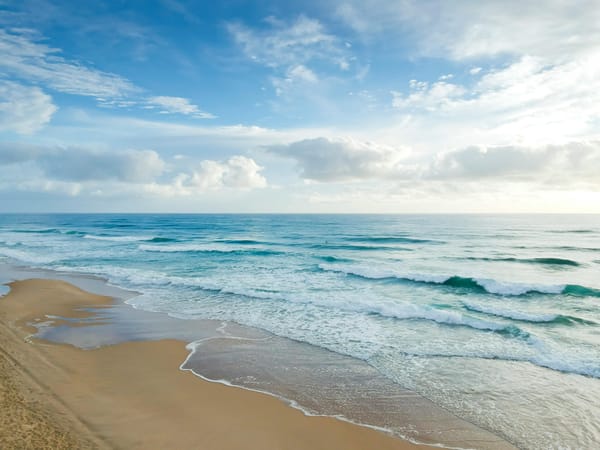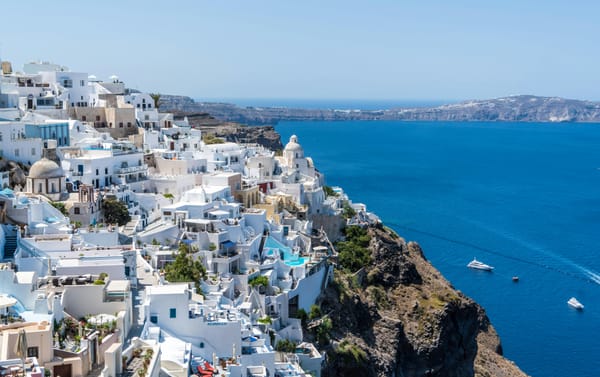Thursday☕️

Trending:
- Yesterday, May 14, 2025, President Donald J. Trump signed an economic agreement with Qatar in Doha, enabling a $1.2 trillion economic exchange and additional deals worth over $243.5 billion. The agreements include a $96 billion contract with Boeing and GE Aerospace for Qatar Airways to purchase 210 Boeing 787 Dreamliner and 777X aircraft, expected to support over 1 million U.S. jobs during production. Other deals involve McDermott’s $8.5 billion energy infrastructure projects, Parsons’ $97 billion in engineering contracts, a $1 billion quantum technology partnership with Quantinuum, and defense agreements with Raytheon ($1 billion for counter-drone systems) and General Atomics ($2 billion for MQ-9B drones). These deals aim to enhance U.S.-Qatar economic and security cooperation, including $38 billion in other defense investments.
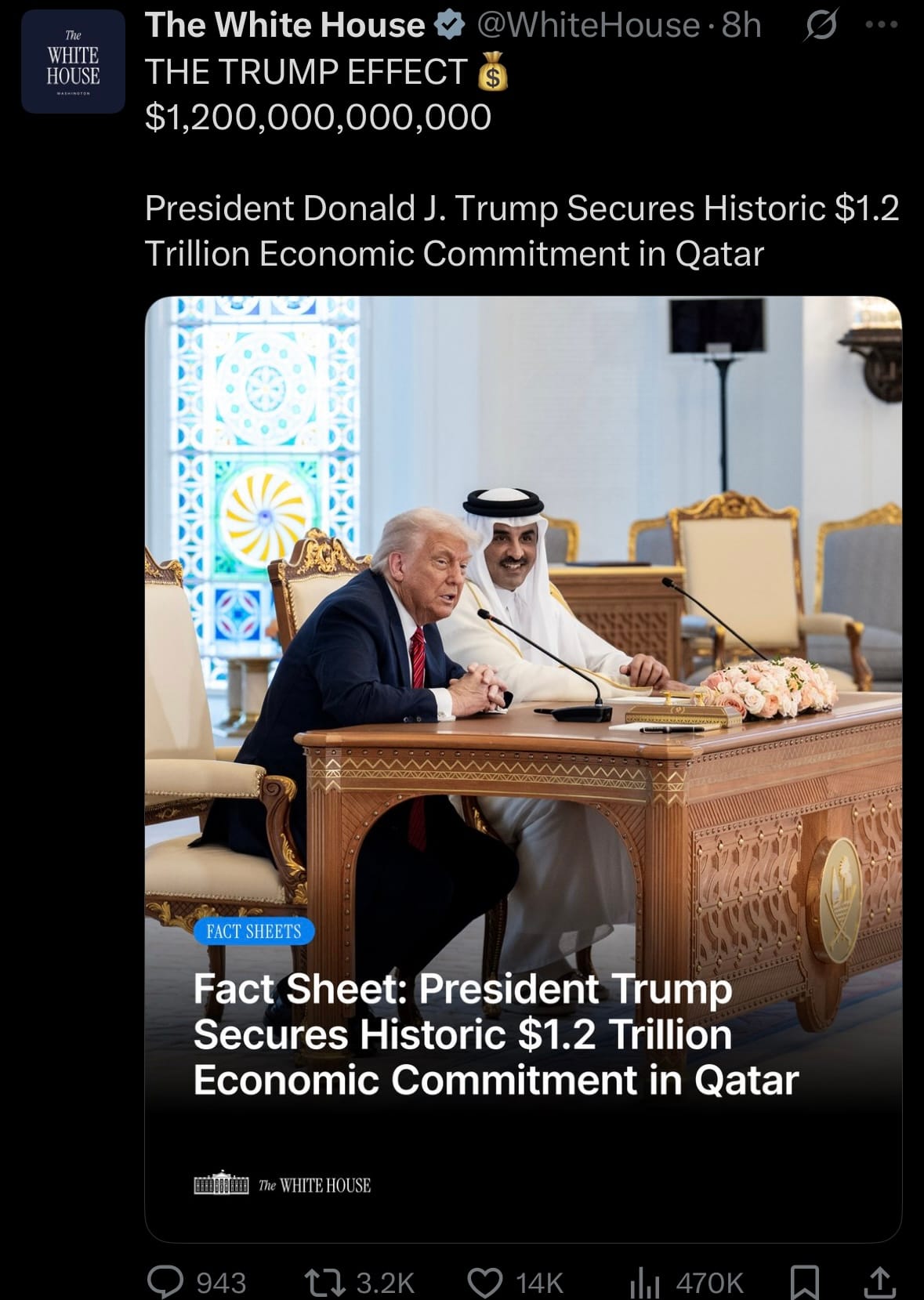
- The agreements align with Qatar’s National Vision 2030, supporting U.S.-Qatar trade, which totaled $5.64 billion in 2024 with a $2 billion U.S. surplus. Qatar has invested $3.3 billion in U.S. sectors like energy and technology, including $18 billion in U.S. energy projects since 2019. These deals are part of broader U.S. efforts to strengthen domestic manufacturing and job creation, following recent trade agreements with Saudi Arabia, the UK, and China.
Economics & Markets:
- Yesterday’s U.S. stock market:
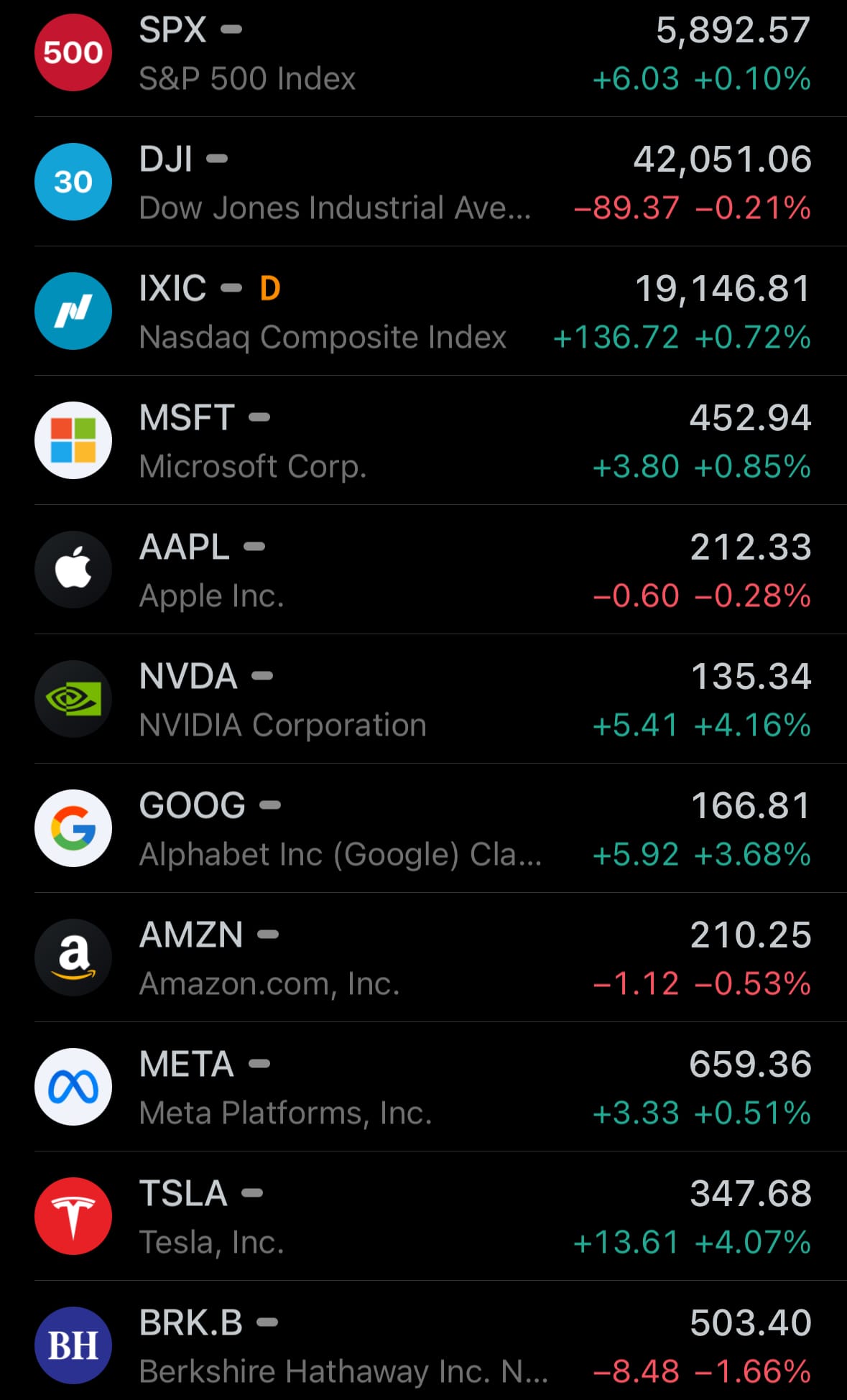
- Yesterday’s commodity market:
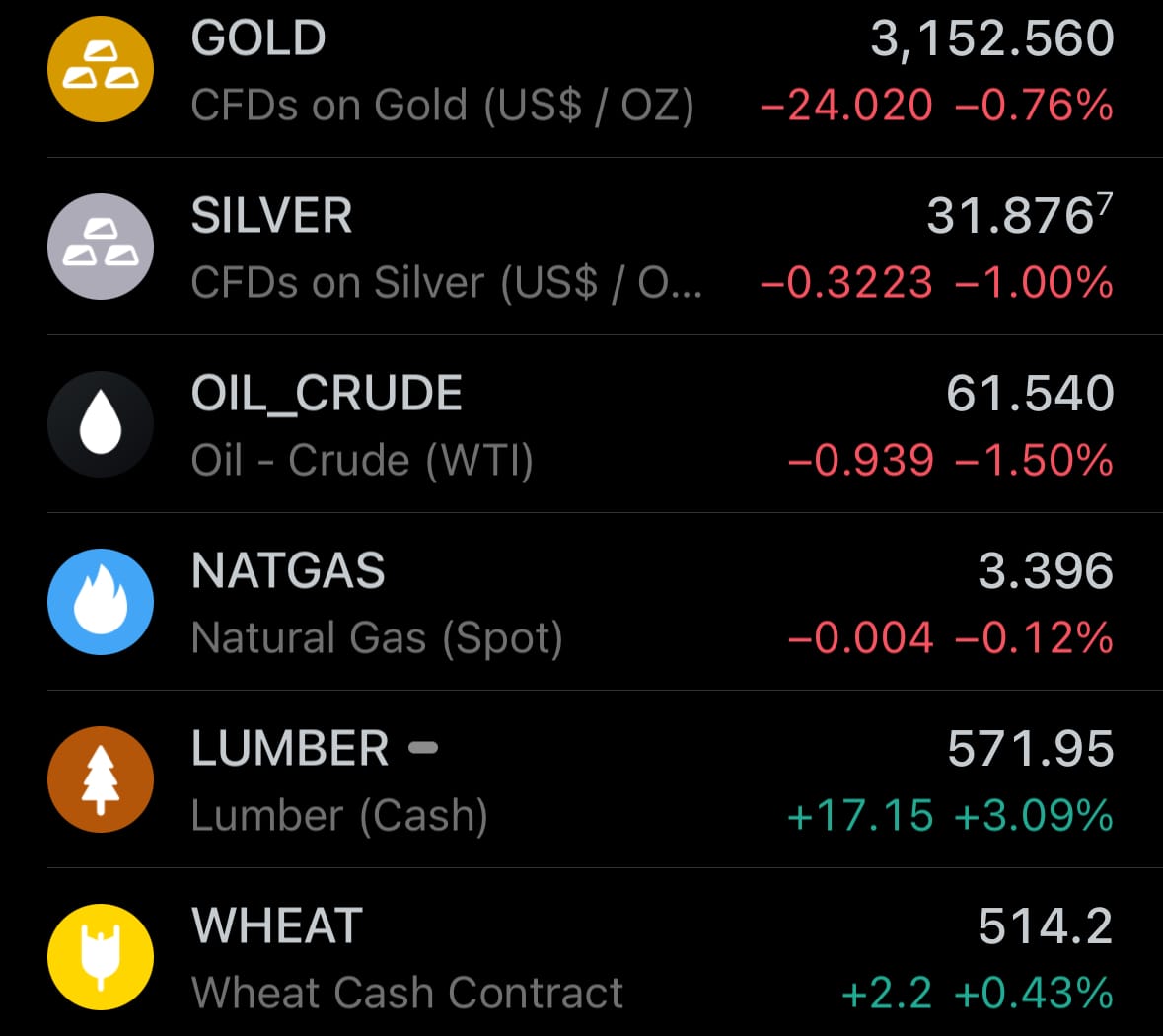
- Yesterday’s crypto market:
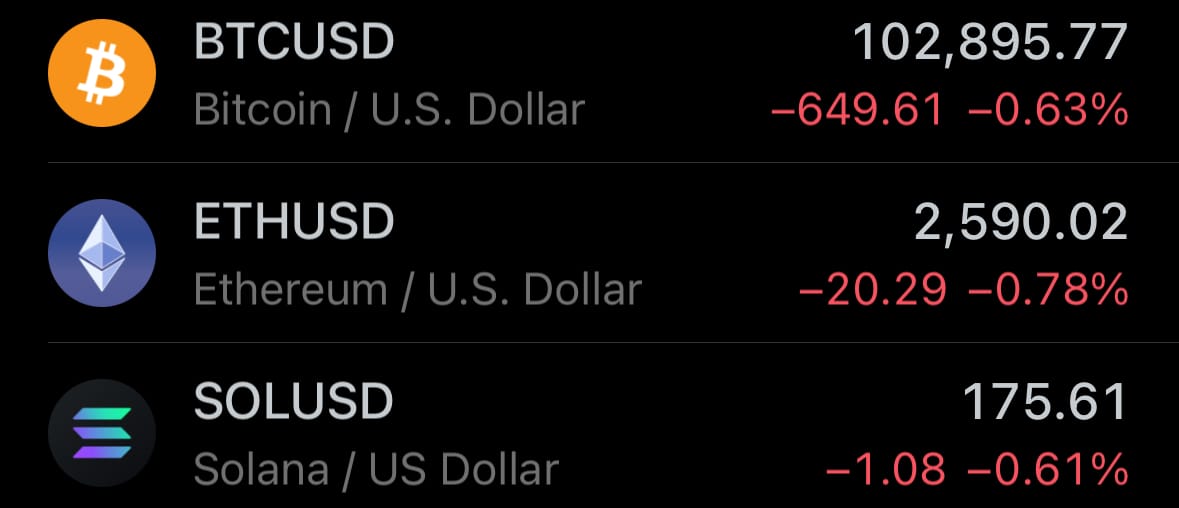
Geopolitics & Military Activity:
- Yesterday, May 14, 2025, Estonian naval forces attempted to intercept a Gabon-flagged oil tanker in the Baltic Sea, suspected of transporting Russian oil to a Russian port. The tanker’s crew resisted boarding, escalating tensions. A Russian Su-35 fighter jet intervened, briefly entering Estonian airspace and prompting the Estonian forces to withdraw. NATO air defenses monitored the incursion, but no direct confrontation between NATO and Russian forces occurred. The incident highlights ongoing challenges in enforcing sanctions on Russian oil shipments, particularly involving vessels registered under flags of convenience like Gabon’s, which complicate tracking and regulation.
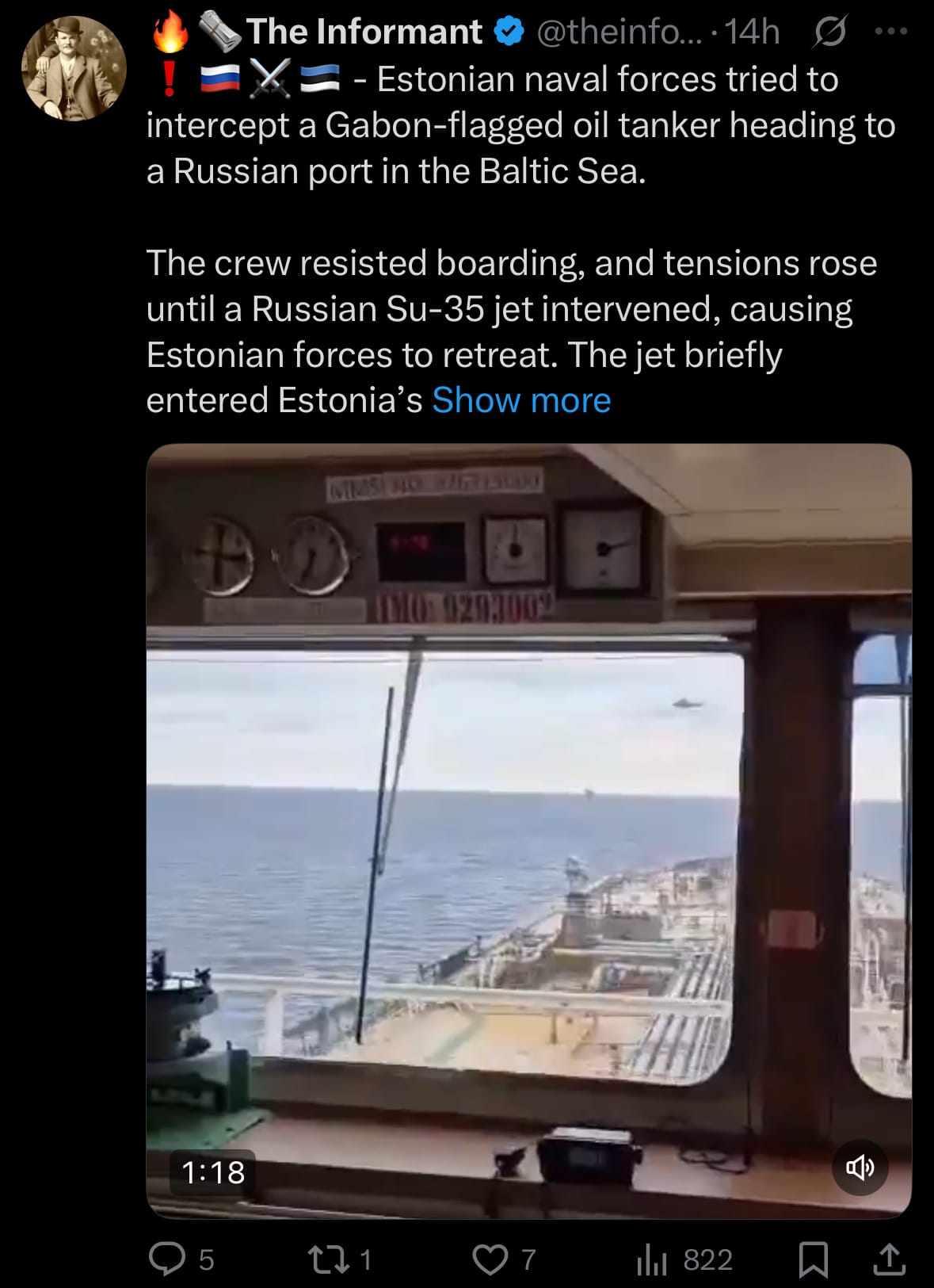
- The event underscores heightened geopolitical tensions in the Baltic region, where NATO and Russian forces frequently operate in close proximity. Russia has not officially acknowledged the Su-35’s involvement, but such actions align with Moscow’s strategy to safeguard its maritime trade routes, especially amid Western sanctions targeting its energy exports. NATO has yet to release an official statement, reflecting the delicate balance of responding to airspace violations without escalating into broader conflict. The use of a Gabon-flagged vessel further illustrates the murky logistics of global oil trade, as sanctioned actors exploit third-party registries to evade restrictions, posing persistent enforcement dilemmas for Western navies.
Environment & Weather:
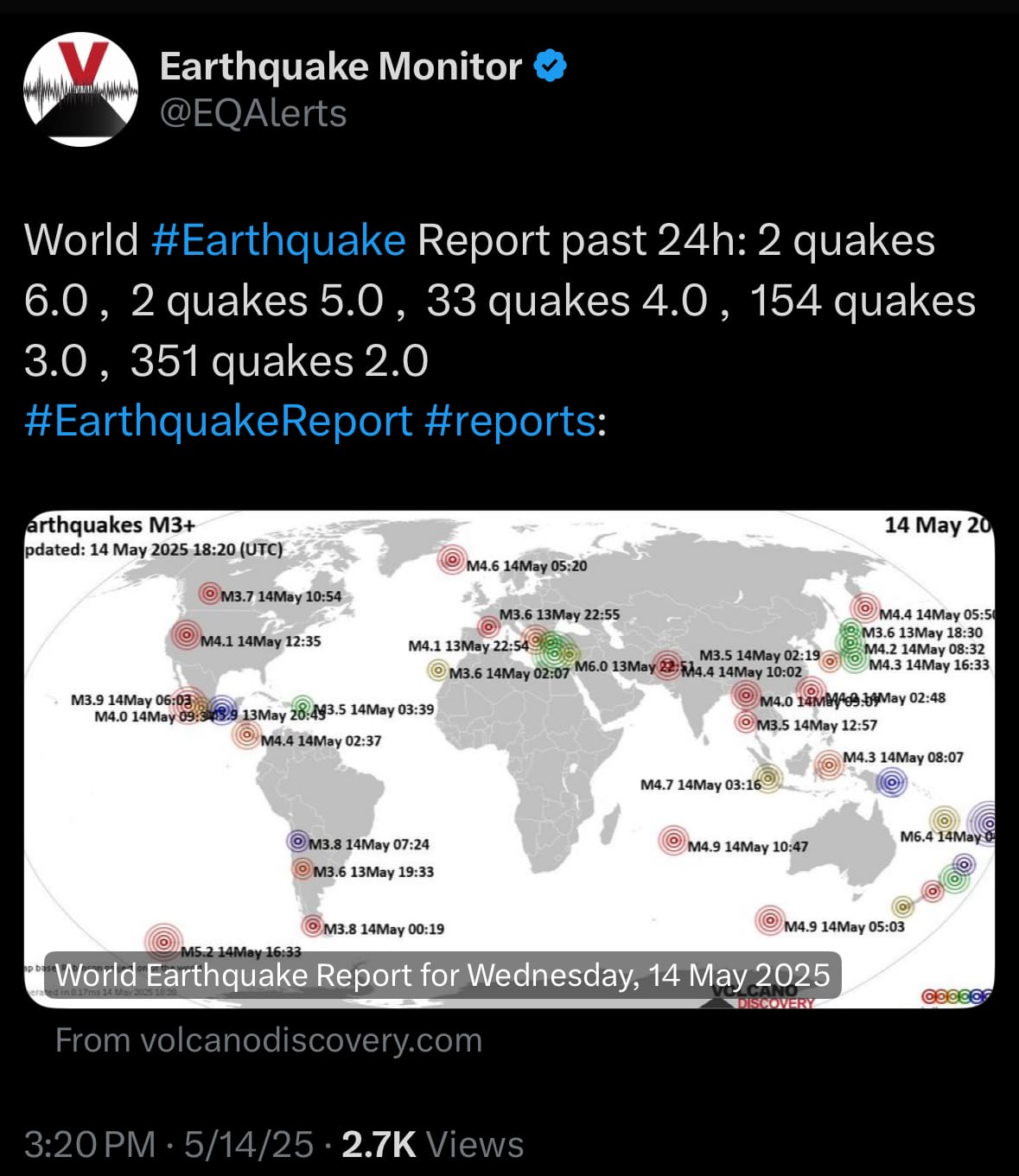
Space:
- Yesterday, May 14, 2025, SpaceX launched a Falcon 9 rocket carrying 28 Starlink V2 Mini satellites (Starlink 6-67) from Space Launch Complex 40 (SLC-40) at Cape Canaveral Space Force Station, Florida, at 12:38 p.m. ET. The first stage booster landed on a droneship in the Atlantic, showcasing SpaceX’s reusable rocket technology. This mission expanded the Starlink constellation for global internet connectivity. SLC-40, operational for SpaceX since 2008, supports frequent Falcon 9 launches, including Starlink and ISS resupply missions, with upgrades to sustain SpaceX’s high launch rate in 2025.
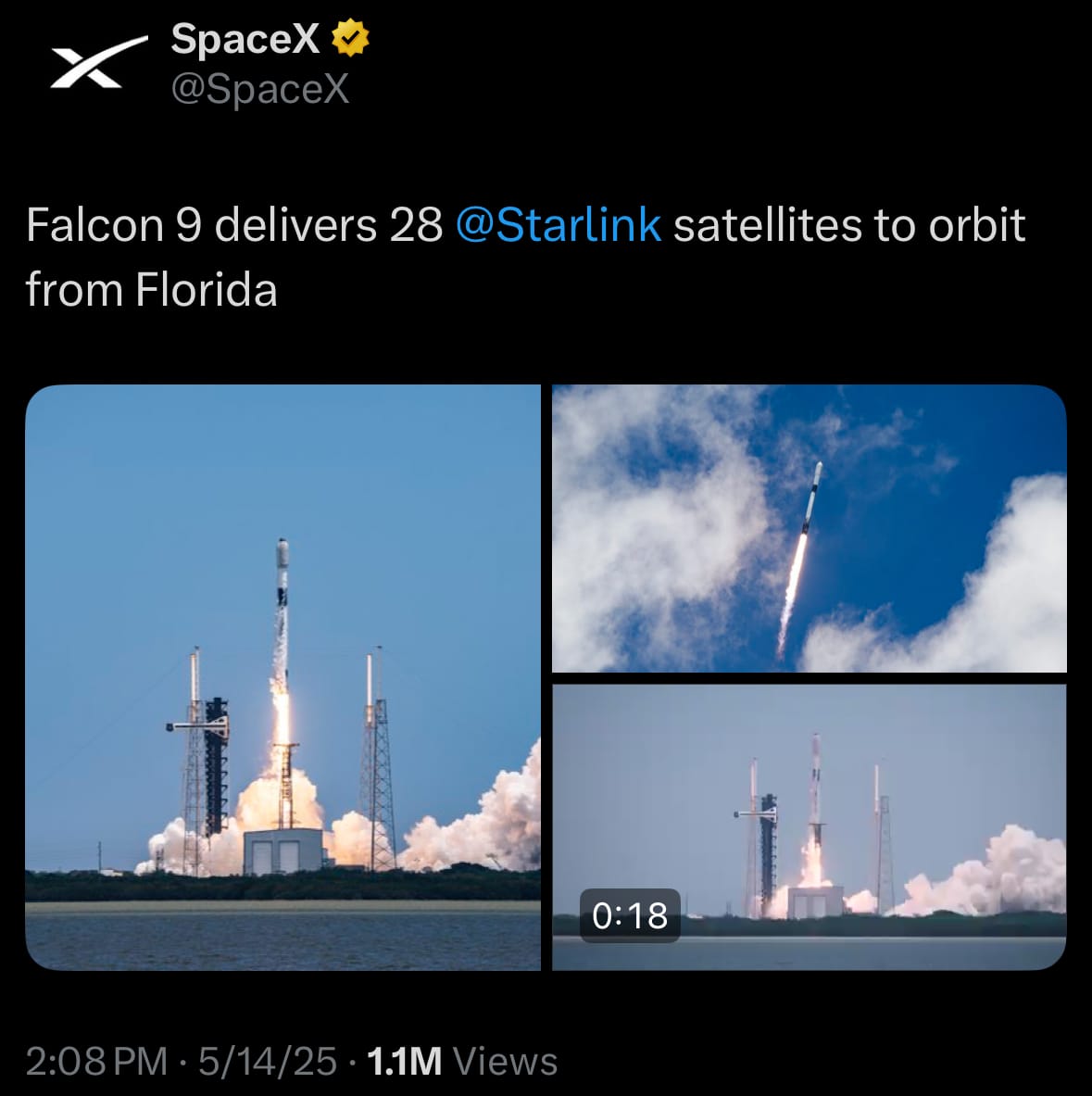
- At Cape Canaveral, SpaceX is building a Starship launch site at Kennedy Space Center’s Launch Complex 39A (LC-39A), near today’s Falcon 9 launch site. LC-39A, historic for Apollo and Shuttle missions, has been SpaceX’s key pad for crewed and heavy-lift launches since 2017. Starship, the largest rocket ever, is designed for full reusability and Mars missions, with a test flight planned for late May from Starbase, Texas. Recent regulatory approvals support more Starship launches and landings, enabling NASA’s lunar lander and future propellant depot missions.
Statistic:
- Largest public EU companies by market capitalization:
- 🇩🇪 SAP: $342.35B
- 🇫🇷 Hermès: $302.34B
- 🇳🇱 ASML: $302.33B
- 🇫🇷 LVMH: $292.62B
- 🇩🇰 Novo Nordisk: $289.82B
- 🇳🇱 Prosus: $229.21B
- 🇫🇷 L’Oréal: $228.13B
- 🇮🇪 Accenture: $200.58B
- 🇩🇪 Siemens: $196.46B
- 🇩🇪 Deutsche Telekom: $173.80B
- 🇪🇸 Inditex: $167.37B
- 🇩🇪 Allianz SE: $152.04B
- 🇳🇱 Airbus: $140.59B
- 🇫🇷 Schneider Electric: $138.16B
- 🇫🇷 TotalEnergies: $131.03B
- 🇧🇪 Anheuser-Busch Inbev: $130.34B
- 🇸🇪 Spotify: $129.84B
- 🇮🇪 Eaton: $128.77B
- 🇫🇷 EssilorLuxottica: $127.25B
- 🇫🇷 Sanofi: $123.24B
- 🇫🇷 Air Liquide: $118.77B
- 🇫🇷 Safran: $118.44B
- 🇪🇸 Santander: $114.52B
- 🇮🇪 Medtronic: $108.05B
- 🇪🇸 Iberdrola: $107.84B
History:
- The European Union (EU) traces its origins to the aftermath of World War II, when European leaders sought to prevent future conflicts through economic cooperation. In 1951, six nations—Belgium, France, Germany, Italy, Luxembourg, and the Netherlands—formed the European Coal and Steel Community (ECSC), integrating their coal and steel industries to foster interdependence. This laid the groundwork for the 1957 Treaty of Rome, which established the European Economic Community (EEC), aiming for a common market with free movement of goods, services, capital, and people. The EEC expanded over time, with Denmark, Ireland, and the United Kingdom joining in 1973, followed by Greece, Spain, and Portugal in the 1980s. The 1992 Maastricht Treaty marked a pivotal moment, formally creating the EU, introducing a single currency (the euro), and expanding cooperation into areas like foreign policy and justice.
- The EU continued to grow, with significant enlargements in 2004 and 2007 welcoming former Eastern Bloc countries, bringing the total to 27 member states by 2013. The euro was adopted by 19 countries, enhancing economic integration, though challenges like the 2008 financial crisis and migration surges tested solidarity. The EU developed a complex governance structure, with institutions like the European Commission, European Parliament, and Council of the EU balancing national and collective interests. However, the 2016 Brexit referendum, leading to the UK’s exit in 2020, highlighted internal divisions. Today, the EU remains a global economic and political force, navigating challenges such as digital transformation, and geopolitical tensions while striving to maintain unity among diverse nations.
Image of the day:

Thanks for reading!
Earth is complicated, we make it simple.
Click image to view the Earth Intelligence System:
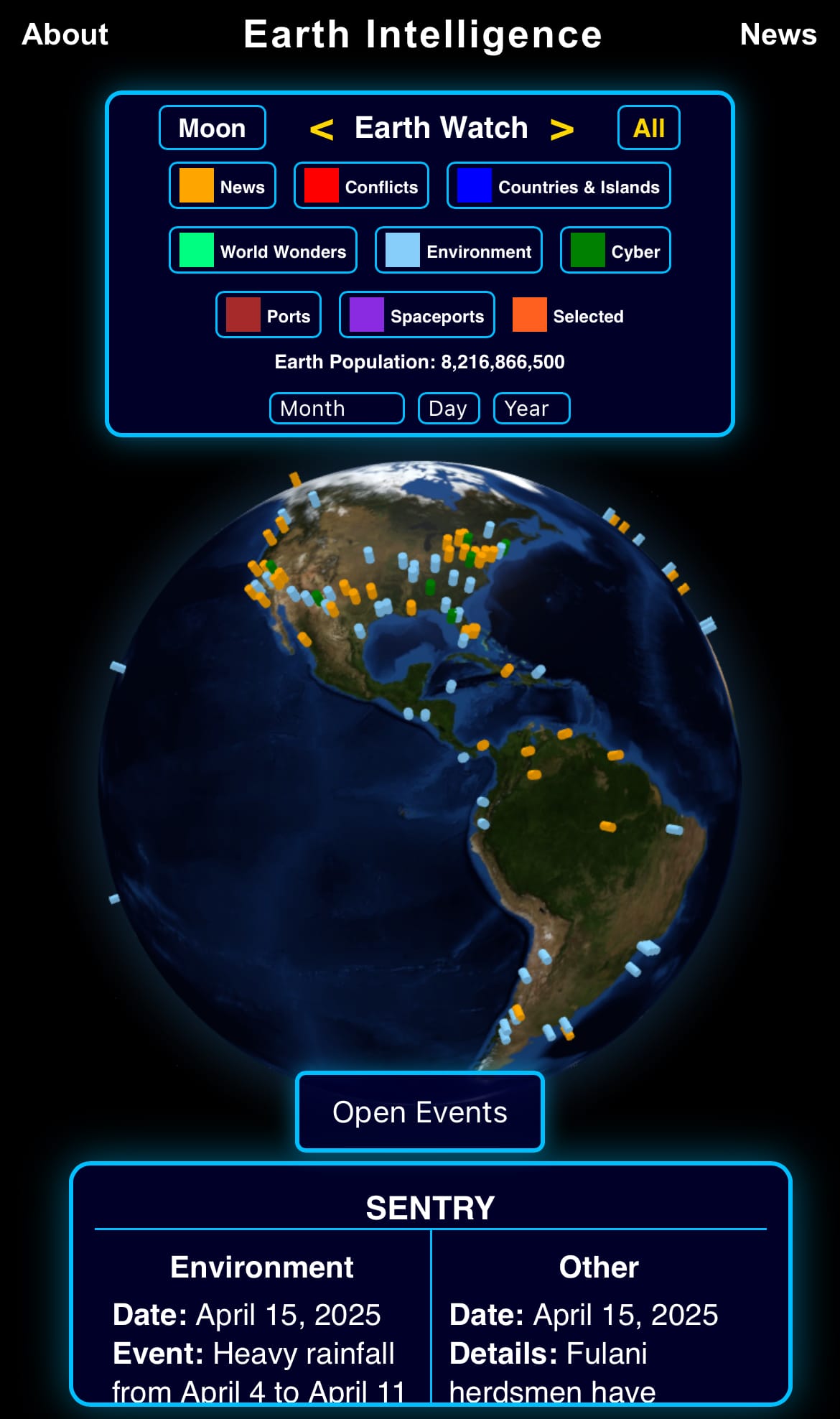
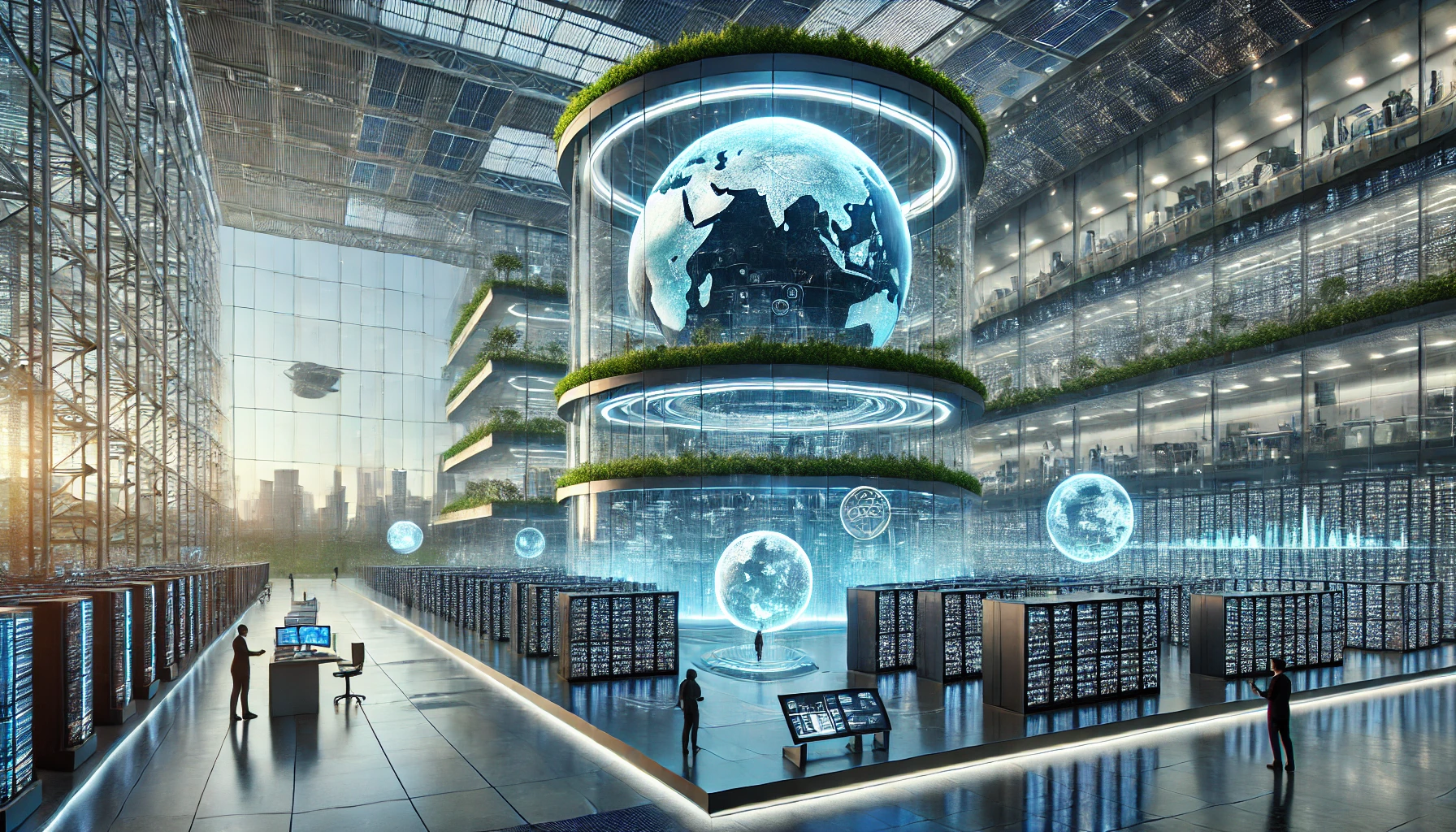

Support/Suggestions Email:
earthintelligence@earthintel.news
